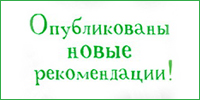Four-Variable Risk Model in Men and Women With Heart Failure
Background—Risk stratification is an integral component of clinical decision making in heart failure (HF). Women with HF have unique characteristics compared with men, and it is unknown whether common prognostic factors are equally useful in both populations. We aimed to investigate whether sex-specific risk models are more accurate for risk prediction in patients with advanced HF.
Methods and Results—Patients with advanced HF referred to University of California, Los Angeles (UCLA; n=2255), were stratified by sex into derivation (referred in 2000–2007) and validation (referred in 2008–2011) cohorts. Cox regression analysis was used to ascertain key variables predictive of the primary end point of death/urgent transplantation/ventricular assist device in the derivation cohorts and confirmed in the validation cohorts in men, women, and the total population. Women were younger, with higher ejection fraction and better event-free survival. Despite differences in baseline characteristics, the 4 strongest predictors of outcome in both women and men, as well as in the total cohort, were B-type natriuretic peptide, peak oxygen consumption by cardiopulmonary exercise testing (pkVO2), New York Heart Association (NYHA) classification, and use of angiotensin-converting enzyme inhibitor or angiotensin receptor blocker. In addition, the UCLA model performed better than the Seattle Heart Failure Model (SHFM) and the Heart Failure Survival Score (HFSS) in our cohort (c-indices of 0.791[UCLA] versus 0.758 [SHFM], 0.607 [noninvasive HFSS], and 0.625 [invasive HFSS]).
Conclusions—A simple risk model assessing 4 clinical variables—B-type natriuretic peptide, pkVO2, NYHA, and angiotensin-converting enzyme inhibitor/angiotensin receptor blocker use—is well suited to provide prognostic information in both men and women with advanced HF.
Source: circheartfailure.ahajournals.org


.jpg)



